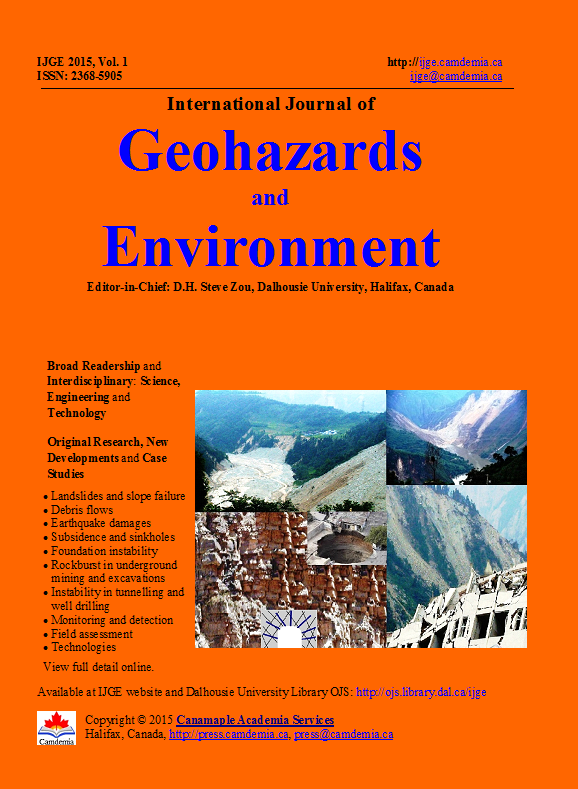Review of Photogrammetry-Based Techniques for Characterization and Hazard Assessment of Rock Faces
DOI:
https://doi.org/10.15273/ijge.2015.02.009Keywords:
geotechnical mapping, rock faces, photogrammetry, Structure from Motion, Digital Terrain Model, rockfall hazardsAbstract
Photogrammetry-based techniques offer a fast and inexpensive way to obtain data needed for geotechnical characterization and hazard assessment of steep rock faces. These techniques also mitigate fieldwork risks associated with conventional structural mapping methods. A camera can function as an accurate survey tool, in most cases as accurate as conventional laser-based survey equipment. Millions of 3D coordinates can be determined from only a few photographs. Mounting a camera on an Unmanned Aerial Vehicle (UAV) solves many of the challenges associated with measuring and mapping steep rock faces. Small low-cost UAVs offer operational flexibility and high quality images. With good photographs taken from appropriate locations, photogrammetry or structure from motion software can generate accurate point clouds, digital surface or terrain models, and orthophotos. With further analysis and interpretation, these can yield the geotechnical data needed to create realistic models in discrete element or finite element software to perform stability assessment.
Downloads
Published
Issue
Section
License
Copyright, Terms and Conditions
The International Journal of Geohazards and Environment (the Journal) is published by Canamaple Academia Services (the Publisher) online with open access, under a Creative Commons Attribution-Noncommercial license (CC-BY-NC) (http://creativecommons.org/licenses/by-nc/4.0/). Authors (the Authors) submitting papers (the Work) for publication in the Journal automatically agree to the following terms and conditions.
1. Under the license (CC-BY-NC), Authors give permission for others to share and reuse the Work, as long as the original source and author(s) are properly cited (i.e. a complete bibliographic citation and link to the Journal website) and the material is not used for commercial purposes. Any sharing or reuse must however indicate the original CC-BY-NC license terms of the work.
2. Authors transfer and assign to the Publisher all copyright in and to the Work. However Authors retain all proprietary rights except the copyright, related to the Work and also retain the rights a) to use, reproduce, distribute, and publicly display the Work in any medium in connection with the Authors‘ academic and professional activities, such as teaching, presentations and lectures, b) to create derivative works from the Work and to make full use of the Work in future research and publications, c) to authorize others to make any non-commercial use of the Work, d) to make both the pre-published and final-published versions available online in institutional and/or disciplinary repositories or on their own websites with a citation and link to the original paper published in the Journal.
3. Authors warrant that the Work is their original work, it is not copied from anywhere or anyone else, they are totally responsible for the authenticity, originality, validity and accuracy, and the facts and views are their own, that the Work contains no matter which is defamatory or infringes any literary or proprietary rights, intellectual property rights, or any rights of privacy, and that the Work has not been simultaneously submitted to any other journals or publishers. Authors further agree that their manuscripts whether accepted or rejected will not be returned and the rejected manuscripts will be disposed at the journal editor's discretion.
Disclaimer: The Publisher, the Journal and the editors accept no responsibility for statements or opinions expressed by authors. Use of information and materials in the Journal is the sole responsibility of users.


